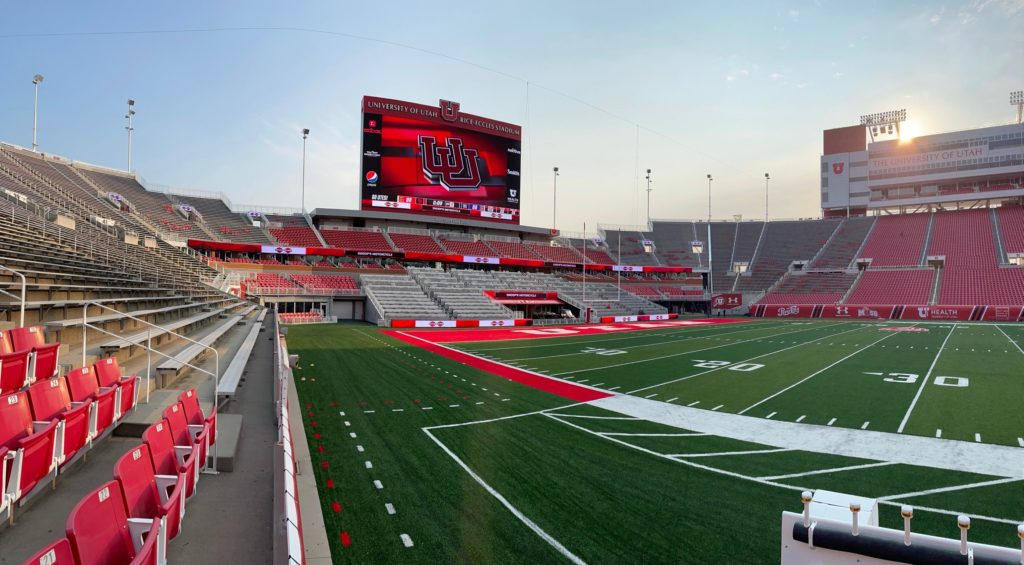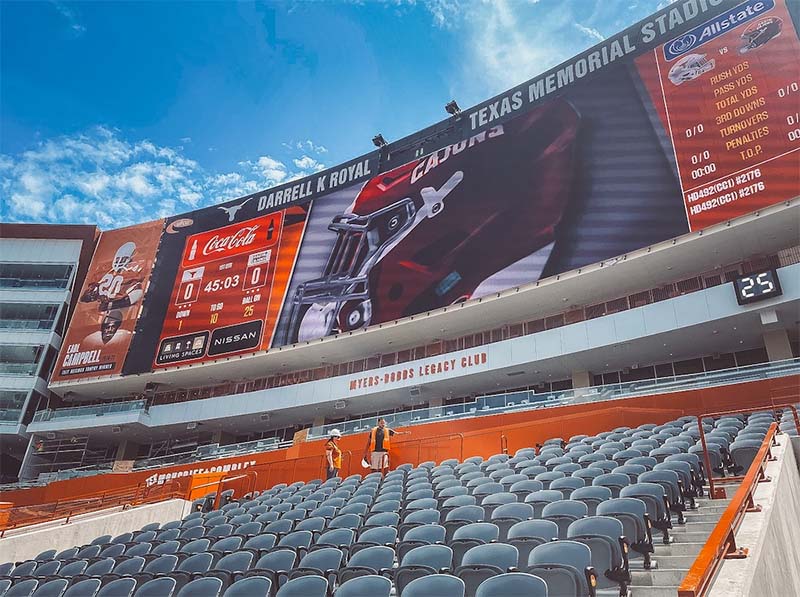
We’ve been writing for several years about end-zone upgrades becoming a big deal in college football, and this season sees the unveiling of two notable projects: Rice-Eccles Stadium and DKR-Texas Memorial Stadium.
It’s an interesting twist on a conventional architectural style, closing off the horseshoe of the traditional football stadium with a new structure. You see the traditional horseshoe design throughout NCAA football, in stadiums both old and new, ranging from Ohio Stadium (which opened in 1922) to Huntington Bank Stadium (the former TCF Bank Stadium, opening in 2009). There is an advantage to the horseshoe: most seats are facing the action, even those in the corners and at the top of the curved horseshoe. And even in college football stadiums with a different design–whether it be two main grandstands along the field, a designed implemented in venerable facilities like Husky Stadium, or the traditional oval bowl–the areas in the end zones, particularly at the top of the horseshoe, tend to be underutilized.
This season sees the unveiling of two notable end-zone upgrades: DKR-Texas Memorial Stadium additions at the University of Texas, and Ken Garff Red Zone at Rice-Eccles Stadium, at the University of Utah. These are not inexpensive upgrades — the University of Texas project cost $175 million, while the Rice-Eccles Stadium project cost $80 million. They differ in some key details, but they exist for the same reason: to upgrade what had been under-utilized space at the college football stadium.

At DKR-Texas Memorial Stadium, the new south end zone fully encloses the stadium for the first time in DKR-Texas Memorial Stadium’s 95-year history, carrying over the architecture of the north and east sides through new entry towers and filling in the corners with concessions-equipped terraces. One of the project’s crown jewels lies inside the seating bowl. A Longhorn-shaped balcony designed into the end zone seating will be visible from the air and is the first time a logo will be carved into a seating bowl. Along with new facilities for coaches and student-athletes, the space will include a student seating section with multiple corner patios, providing a unique game-day vantage point.
At Ken Garff Red Zone at Rice-Eccles Stadium, the expansion and renovation project adds premium seating and increase stadium capacity by nearly 5,000, to 51,000. The expansion houses both teams’ locker rooms, officials’ locker rooms, sports medicine and equipment facilities, and many other spaces dedicated to game-day personnel at field level, plus a large field club.
One more project worth noting: The Shamrock Zone at Kansas State University’s Bill Snyder Family Stadium, which added a new 13,500-square-foot club space, 24 points of sale, plenty of new restrooms, and a variety of club-seating options. You can read more here.
Look for these end-zone upgrades to continue. Though The Bounce House at the University of Central Florida is a closed bowl, the proposed upgrades over the next few years are essentially end-zone upgrades. Though some proposals were put off because of COVID-19 issues, they are likely to be revived. For instance, the University of Wisconsin tabled plans for Camp Randall end-zone upgrades that would have also renovated parts of the adjoining field house, but don’t be surprised if the project is revived next year.
Photo of DKR-Texas Memorial Stadium upgrade courtesy University of Texas. Photo of Rice-Eccles Stadium upgrade courtesy Populous.
